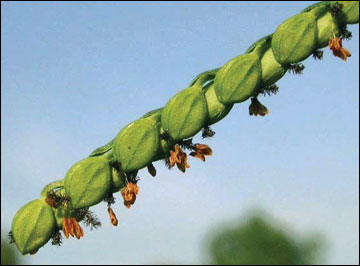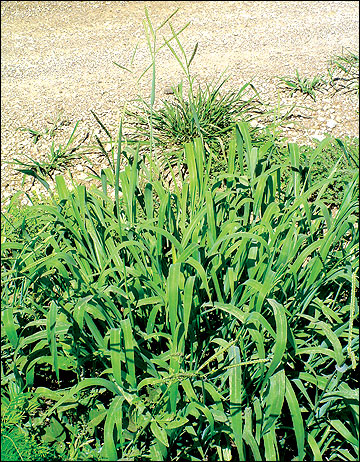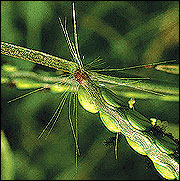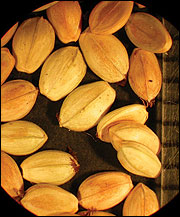Paspalums
- Paspalum spp.
- Dallis grass
Grass
Paspalums are prolific seed producers.
Scott Sudkamp, Missouri Department of Conservation

Paspalum seeds line up neatly in rows. Seed shape and arrangement on the stem are the most readily identifiable feature of the paspalums.
©Patrick J. Alexander, USDA-NRCS Plants Database
Description
The most obvious characteristic of the paspalums is the shape of the seeds and their manner of attachment. Seeds are round and flattened and are neatly lined up (but sometimes overlapping slightly) on the seed stalk in two or four rows.
Use by bobwhites
As with the panic grasses, paspalums rarely dominate a stand, but rather occur scattered about and tend to increase diversity and provide the kind of habitat structure that is beneficial for nesting, brood and roosting cover. Bobwhites consume the seeds, sometimes stripping them off the plant. The seeds of several species are at peck-height for easy feeding, which may contribute to their frequent use by quail.




